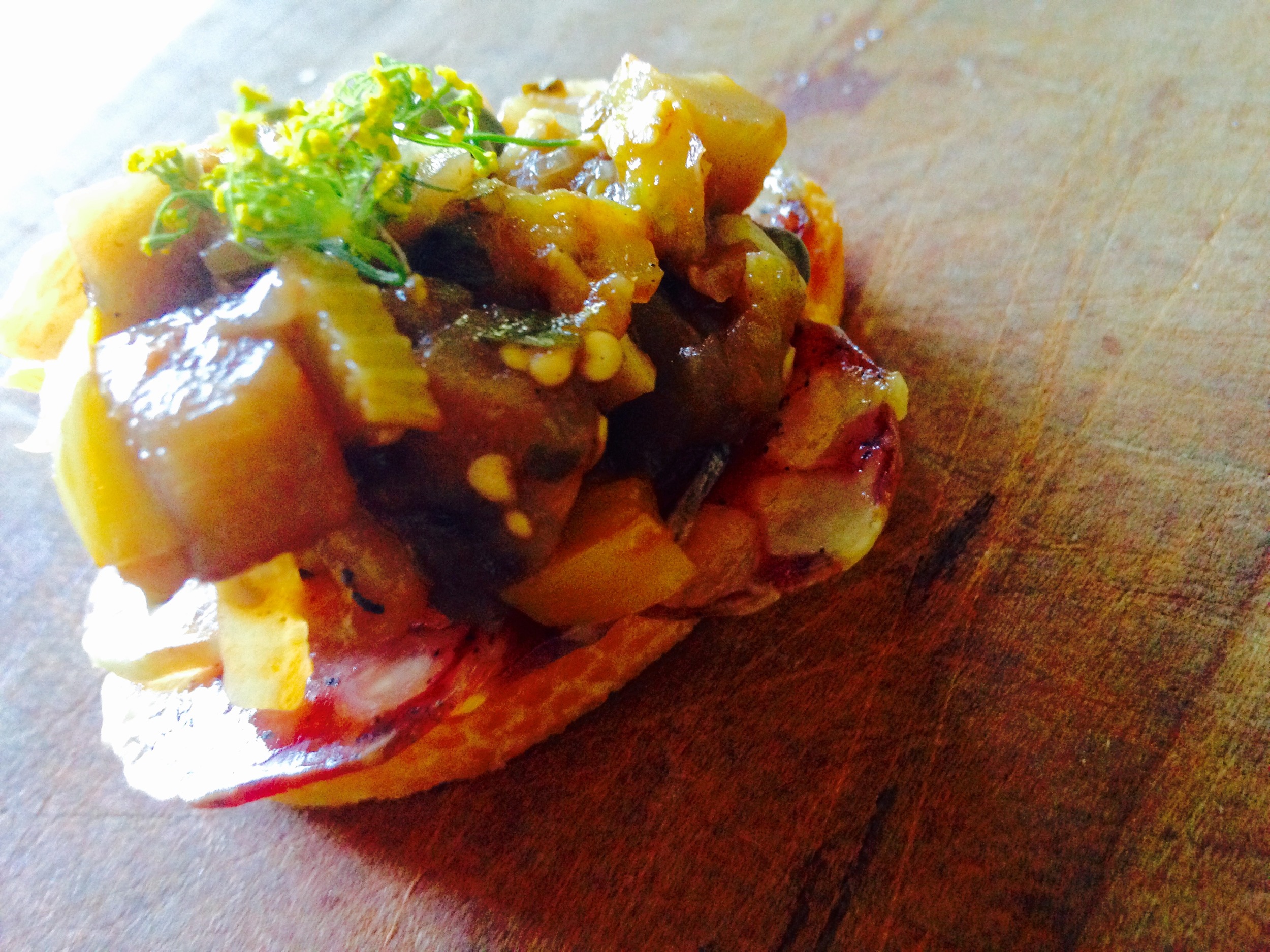Eggplant Caponata
Caponata is like an eggplant tapenade, with sweet notes as well as savory ones. My friend Patryk Battle introduced it to me, and we made some of it and fermented it for improved eating. This year, I altered his recipe slightly, and used this in a stuffed bread, as well as on top of crostini with charcuterie (pictured here).
You can ferment this too! Just omit the olive oil and the vinegars and use at least 2% sea salt to the weight of the rest of the ingredients and follow the process in the footnote.*
1 large Italian eggplant, finely chopped
sea salt
fresh ground black pepper
1 C. almonds, toasted and chopped
½ C. extra virgin olive oil
1 onion, diced
2 celery ribs, sliced thin
1 bell pepper, chopped into small pieces
4 cloves garlic, minced
2 T. minced fresh mint
2 T. minced Italian parsley
2 T. tomato paste
½ t. ground cinnamon
2 T. capers
½ C. chopped figs
2 T. red wine vinegar
2 T. balsamic vinegar
Place the chopped eggplant into a sieve, and salt it. Allow to rest in the sink while you prep the other ingredients. When you’re ready, rinse the eggplant and pat it dry.
Warm the olive oil in a deep cast iron skillet, and sauté the onion, celery and garlic. Next add the pepper, then the eggplant. Allow all the veggies to soften, then add remaining ingredients, stirring to thoroughly combine. Taste to check seasonings, and ensure the caponata is heated through. Serve warm, or freeze for later use. The caponata will keep in the fridge in a mason jar for about 5-7 days, but be sure to freeze any unused product after that, as mixtures of olive oil and garlic and develop botulism over time, even at refrigerator temperatures.
*To ferment this instead: omit the olive oil and vinegars and use at least 2% sea salt to the weight of all the other ingredients. Massage the salt in gently to allow the vegetables to release their juices, but not so much as to smash them too much. Pack the caponata tightly into jars and weigh it down. This is important! Weighing the caponata ensures that as the veggies release moisture under the power of the salt, they will create a brine and remain underneath that brine during the time it takes to ferment. Keeping the brine level above the fermenting vegetables will prevent mold growing on top. Put lids on the jars and leave them to ferment for 7-10 days at room temperature before you start tasting them. Taste them after a minimum of a week, and if you want to ferment them longer, go for it! The longer they sit, they will develop a more sourly and funky flavor character.
For more information on fermenting methods, check out the online course Mastering Fermented Vegetables at The Fermentation School.
